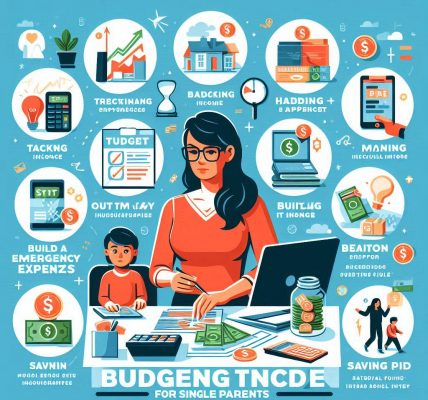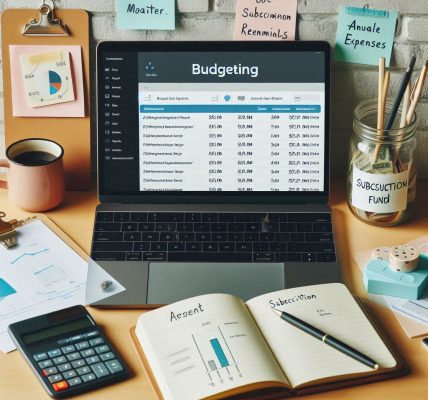📚 Introduction
In today’s fast-paced digital world, keeping track of expenses manually can be tedious and prone to errors. Budgeting apps simplify this process by helping you monitor your spending, set financial goals, and manage your budget effectively.
By leveraging these apps, you:
✅ Gain real-time insights into your spending habits
✅ Set achievable savings goals
✅ Stay on top of your financial health effortlessly
This guide will cover:
👉 How budgeting apps work and their benefits
👉 Step-by-step instructions to use them effectively
👉 Tips to maximize app features for financial success
The content will be SEO-friendly, audience engaging, and legally compliant to prevent any legal complications.
🎯 Why Budgeting Apps Are Essential for Modern Money Management
Budgeting apps provide a comprehensive overview of your income, expenses, and savings, helping you stay financially disciplined.
📊 1. Real-Time Expense Tracking
Budgeting apps categorize transactions automatically, giving you a clear picture of your spending patterns.
✅ Identify Excessive Spending: Pinpoint areas where you overspend.
✅ Set Spending Limits: Get alerts when approaching budget limits.
📊 2. Goal-Oriented Savings
Set financial goals like building an emergency fund, saving for a vacation, or repaying debt.
✅ Track Progress Easily
✅ Automate Contributions to Savings Goals
📊 3. Debt Management and Bill Reminders
Many apps offer debt repayment plans and reminders for bill payments, ensuring that you never miss a deadline.
✅ Avoid Late Payment Penalties
✅ Reduce Debt Faster with Strategic Payments
📝 Step 1: Choose the Right Budgeting App for Your Needs
Selecting the right app depends on your financial goals and preferred features.
📚 Top Budgeting Apps in India
| App Name | Key Features | Best For |
|---|---|---|
| Money Manager | Expense tracking, budgeting, analytics | Beginners and daily spenders |
| Walnut | SMS-based tracking, bill reminders | Automated expense tracking |
| YNAB (You Need A Budget) | Goal-based budgeting, debt payoff plans | Long-term financial planning |
| PocketGuard | Subscription tracking, bill monitoring | Reducing unnecessary spending |
| Goodbudget | Envelope budgeting system | Manual budget tracking |
📈 Step 2: Set Up and Customize Your Budgeting App
Once you’ve chosen an app, the next step is to set it up according to your financial goals.
✅ 1. Connect Your Bank Accounts and Cards
Most apps allow you to link multiple bank accounts and credit cards for seamless transaction tracking.
- Enable Auto-Sync to automatically import transaction details.
- Categorize past expenses for better insights.
✅ 2. Define Budget Categories
Set spending limits for different categories such as:
- Groceries
- Utilities and Bills
- Dining Out and Entertainment
- Healthcare and Insurance
- Investments and Savings
✅ 3. Establish Financial Goals
Define short-term and long-term goals such as:
- Building a ₹1 lakh emergency fund.
- Paying off high-interest credit card debt.
- Saving for a down payment on a home.
📊 Step 3: Track and Analyze Your Spending Habits
Regularly reviewing your spending patterns ensures that you stay aligned with your financial goals.
📚 1. Monitor Spending Trends
Analyze monthly spending reports to identify areas where you can cut back.
✅ Examine Non-Essential Expenses: Reduce spending on dining, subscriptions, and luxury items.
✅ Identify Hidden Charges: Detect subscription auto-renewals and duplicate payments.
📚 2. Categorize Expenses for Better Insights
Split expenses into fixed and variable categories.
| Fixed Expenses | Variable Expenses |
|---|---|
| Rent/Mortgage | Dining Out |
| Loan Repayments | Shopping |
| Insurance Premiums | Entertainment |
💡 Step 4: Automate Savings and Bill Payments
Automation ensures that you meet your savings goals and avoid late payment penalties.
🔥 1. Set Automatic Transfers to Savings Goals
Link your bank account to automate contributions to savings accounts or investment plans.
✅ Emergency Fund: Automate ₹5,000/month to a high-yield savings account.
✅ SIP or Mutual Funds: Schedule auto-debits for SIP contributions.
🔥 2. Enable Bill Payment Reminders
Set up notifications for utility bills, EMIs, and credit card payments to avoid late fees.
📅 Step 5: Use Advanced Features to Maximize Benefits
Most budgeting apps offer advanced features that can significantly enhance financial management.
📚 1. Subscription Management
Track and manage recurring subscriptions to identify unnecessary expenses.
✅ Get Alerts Before Renewal Dates
✅ Cancel Unused Subscriptions
📚 2. Debt Repayment Strategies
Use built-in debt payoff planners to create a strategy for clearing high-interest debt.
✅ Avalanche Method: Pay high-interest debts first.
✅ Snowball Method: Pay smaller debts to gain momentum.
📚 3. Investment Tracking
Some apps integrate with investment platforms to track your portfolio performance.
✅ Monitor Stock and Mutual Fund Performance
✅ Adjust Investment Strategy Based on Goals
📉 Step 6: Review and Adjust Your Budget Regularly
Regular reviews help ensure that your budget aligns with evolving financial goals and spending habits.
🔁 1. Analyze Monthly Reports
Evaluate your spending, savings, and investment patterns.
✅ Identify Budget Gaps
✅ Reallocate Funds as Needed
🔁 2. Update Financial Goals Annually
Revisit goals such as retirement planning, debt repayment, or buying a home.
✅ Adjust Savings Contributions
✅ Re-evaluate Investment Strategies
🛑 Step 7: Avoid Common Mistakes When Using Budgeting Apps
To maximize the benefits of budgeting apps, avoid these common mistakes:
🚫 1. Ignoring Manual Entries
Some expenses may not auto-sync. Manually add cash transactions to maintain accuracy.
🚫 2. Setting Unrealistic Goals
Set achievable savings and spending goals to stay motivated.
🚫 3. Overlooking Security Settings
Protect sensitive financial information by enabling app security features such as two-factor authentication (2FA) and biometric access.
🎁 Bonus: Pro Tips to Use Budgeting Apps Effectively
✅ Check App Reviews and Updates: Ensure the app is secure and reliable.
✅ Set Budgeting Reminders: Schedule weekly or monthly reviews of your spending.
✅ Use Spending Alerts: Get notified when nearing category limits.
📢 Conclusion: Take Control of Your Finances with Budgeting Apps
Budgeting apps empower you to stay financially disciplined and achieve your financial goals faster. By using these apps effectively, you:
✅ Track and control expenses effortlessly
✅ Set and achieve financial goals with consistency
✅ Avoid unnecessary spending and build a secure financial future
Pro Tip: Choose an app that aligns with your financial goals and customize it to fit your lifestyle. With consistent usage and regular reviews, you can master the art of financial management and achieve long-term financial success! 🚀


